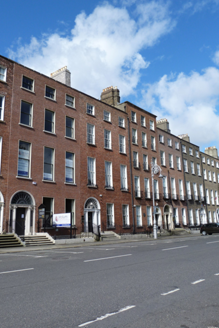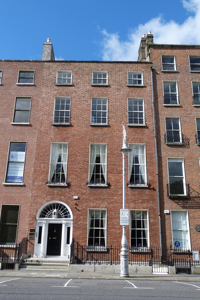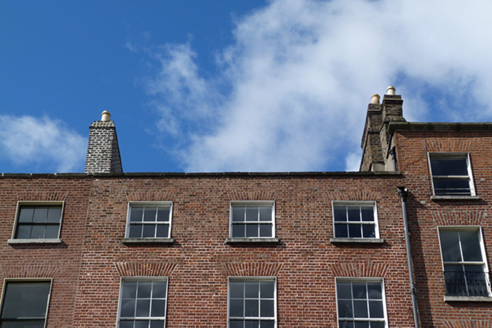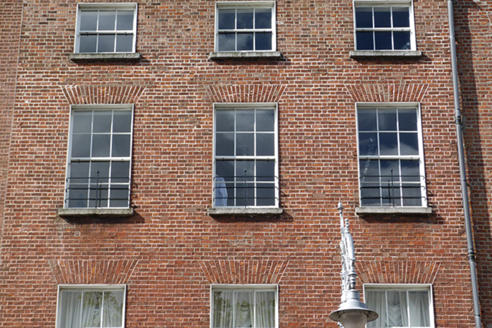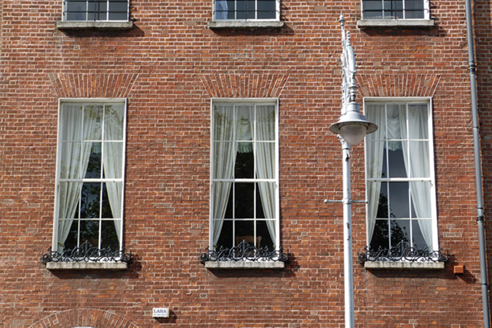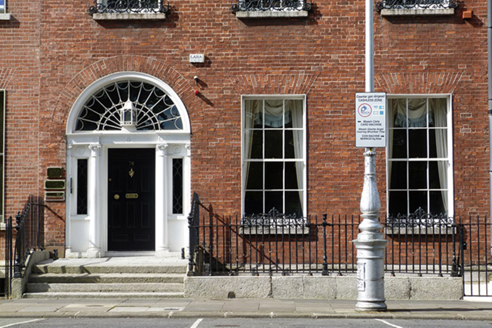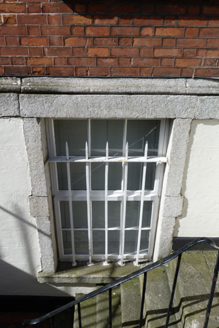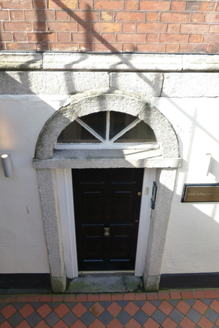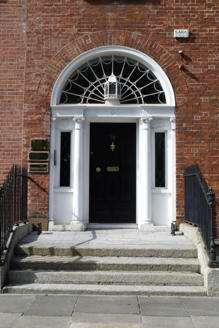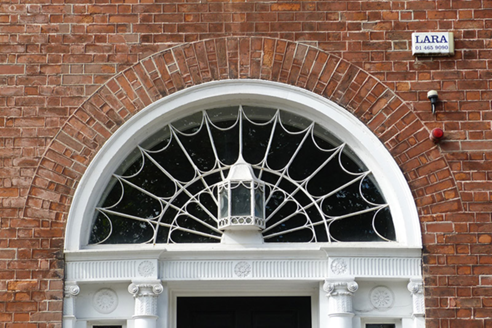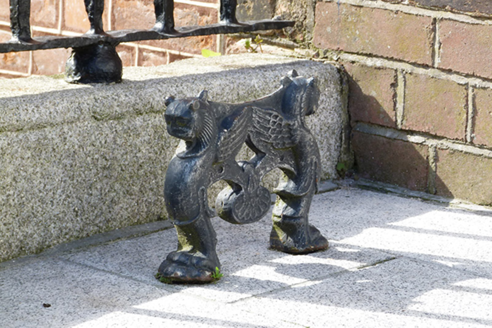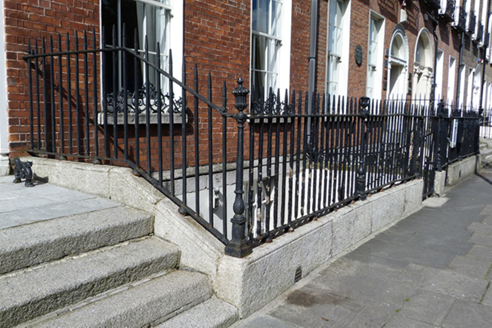Survey Data
Reg No
50100412
Rating
Regional
Categories of Special Interest
Architectural, Artistic
Original Use
House
In Use As
Office
Date
1775 - 1795
Coordinates
316571, 233495
Date Recorded
03/07/2016
Date Updated
--/--/--
Description
Attached three-bay four-storey former house over basement, built c. 1790, having full-height bow to two bays of rear elevation and addition of one, two, three and four storeys. Now in use as offices. Pitched roof to front, behind brick parapet with granite coping, and with two hipped roofs to rear perpendicular to street, larger to western bays. Brick chimneystacks to party walls with clay pots. Replacement uPVC downpipe to front elevation and mainly cast-iron rainwater goods to rear. Flemish bond red brick walling to front elevation on granite plinth course over painted rendered walls to basement; yellow brick to rear elevation. Square-headed window openings, diminishing in height to upper floors, with raised rendered reveals and painted granite sills; carved granite block-and-start surrounds to front basement. Timber sliding sash windows, front elevation having three-over-three pane to top floor and six-over-six pane elsewhere; rear elevation having three-over-three pane to top floor, six-over-six pane to second floor and one-over-one pane to floors below, and with variety of timber sliding sash and replacement windows to addition, first floor of latter having glazed timber fixed and casement windows and glazed French doors. Decorative cast-iron window-guards to ground and first floors and wrought-iron window-guards to second floor of both front and rear elevations, and wrought-iron grilles to front basement. Segmental-headed main entrance doorway with rendered linings, fluted frieze and cornice, engaged Ionic columns with pilaster responds flanking leaded sidelights, cobweb fanlight with lantern, and ten-panel timber door with brass furniture. Front basement has round-headed doorway with granite surrounds, spoked fanlight and recent six-panel timber door. Resurfaced platform with cast-iron boot-scrapes and four granite steps. Wrought-iron railings enclosing basement area with decorative cast-iron posts on carved granite plinth. carparking to rear. Recent public house to site of former mews house on Fitzwilliam Lane.
Appraisal
No. 76 Merrion Square is an elegant Georgian house that forms part of the original development of the eighteenth-century square developed as part of the Fitzwilliam Estate. A well-proportioned building enlivened by its elegant Ionic doorcase, complete with elaborate cobweb fanlight and a projecting lantern. The doorcase and decorative ironwork to the windows add artistic detailing to the otherwise restrained façade. The intactness of the building and its setting contributes significantly to the intact appearance of this internationally important architectural set-piece. The square is one of the best-preserved Georgian streetscapes in Ireland. The north, east and south sides of the square are lined with terraced houses of eighteenth and early nineteenth-century date, while the west side is terminated by the garden front of Leinster House. The terraced houses maintain a relatively uniform building height and design, attributed to standards promoted in Fitzwilliam's leases. Individuality was introduced through the design of doorcases, window ironwork and interior decorative schemes. The south side was initially set in large plots to twelve leases; plots were leased consecutively from east to west up until the row was completed in 1791.
